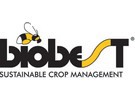For the first time, sweet pepper growers in Belgium and The Netherlands have to fight aphids without the help of Plenum. To optimise control, Biobest advisor Marvin Koot recommends growers combine different biological aphid control agents.
“Aphids have risen a few places up the list of most challenging greenhouse pests,” says Marvin. "Aphid pressure tends to be constant and the sticky exudate produced necessitates growers having to wash harvested fruit. This troublesome pest can also impact on crop quality through causing deformities.”

Introduce parasitic wasp on dry surface
Biobest recommends growers release a mix of biological control agents – centring on the parasitic wasp Aphidius-System and the gall midge Aphidoletes-System.
“Aphidius colemani is an efficient control of cotton aphid as well as green and red peach aphid,” says Marvin. “This parasite searches out newly forming aphid hotspots and parasitizes the pests."
“We recommend introducing Aphidius-System at a rate of one parasitic wasp per m2 every week. It is important to release them on a dry surface. While Aphidius-System can be highly effective, it can sometimes be hyperparasitised by native parasitic wasps,” he warns.
Gall midge needs humid environment
The second Biobest beneficial, Aphidoletes-System, prefers a moist environment. "We recommend growers release the gall midges onto a rockwool pot with a water dripper. Alternatively, some growers use a bucket filled with sand and water. The recommended dose rate is one gall midge per m2. In contrast to Aphidius-System, these gall midge larvae attack large aphid hotspots and target most aphid species."
Ervi-System for potato aphid or foxglove aphid
Where potato or foxglove aphid are identified in a crop, Marvin recommends introducing a third product - Ervi-System. "This parasitic wasp Aphidius ervi specifically targets these two aphid species,” he explains. “We recommend a dose of ¼ parasitic wasp per m2. To aid aphid identification, we’ve produced a poster.”
View the identification poster here.
Hoverflies
In addition, Biobest has another seven aphid control agents in its comprehensive portfolio. The hoverflies Sphaerophoria-System and Eupeodes-System are the newest.
"Sphaerophoria-System works best at higher temperatures, while Eupeodes-System prefers lower temperatures - at the beginning and end of the crop,” explains Marvin. “Our knowledgeable technical advisers are happy to advise customers about the optimal use of these products.”

